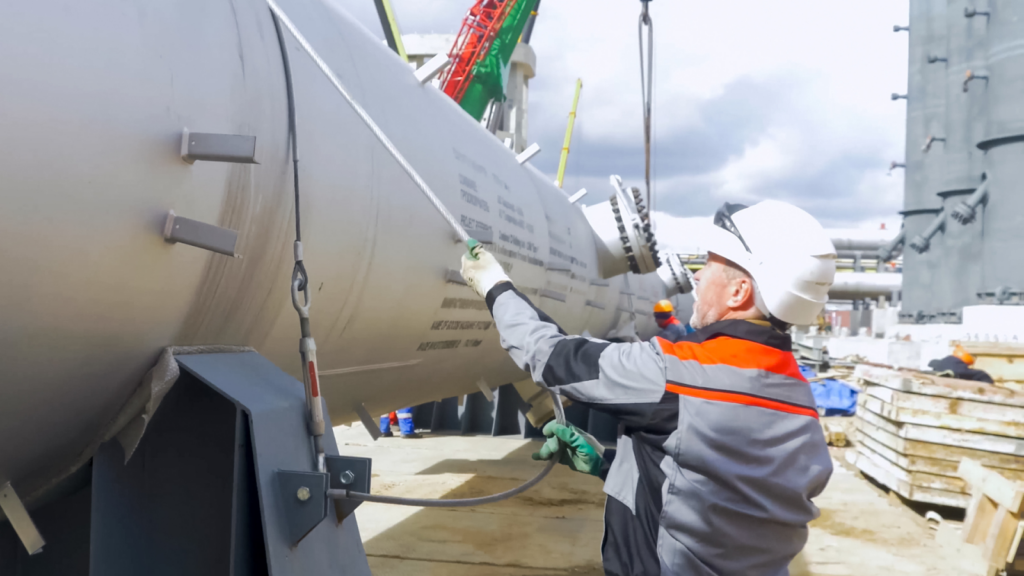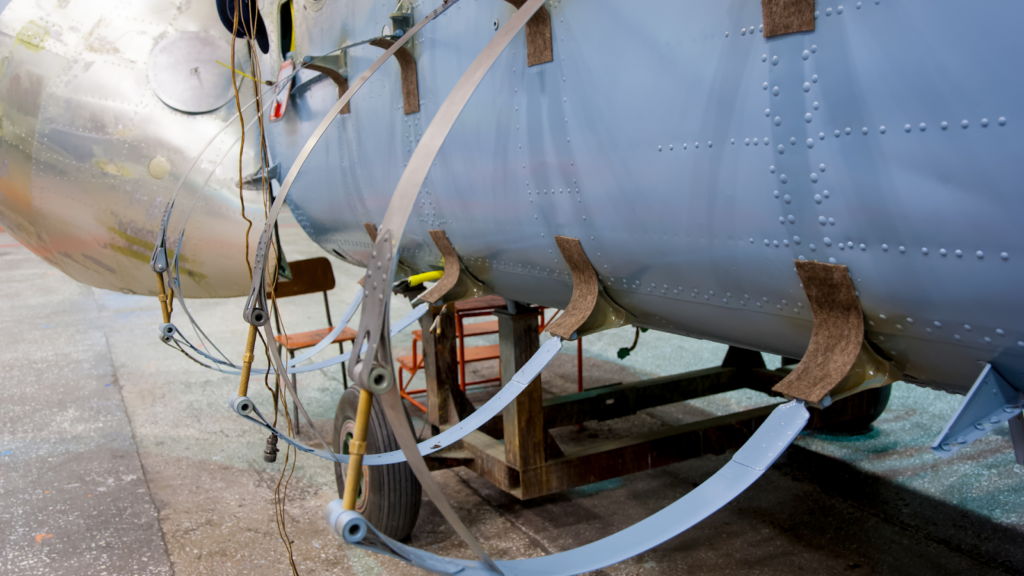ASTM A967 is an important standard for the chemical passivation of stainless steel parts, ensuring they’re more resistant to corrosion. Developed by ASTM International, this standard provides specific methods and criteria to remove free iron from the surface of stainless steel, creating a protective oxide layer. It’s used in various industries like aerospace, automotive, medical devices, and construction, highlighting its broad application and significance. Following ASTM A967 helps manufacturers and engineers improve the durability and lifespan of stainless steel components, making it essential for those involved in designing, producing, or maintaining these parts to understand and implement its guidelines.
The Importance of ASTM A967 in Industry
The ASTM A967 standard plays a pivotal role across various sectors by establishing a benchmark for the passivation of stainless steel parts. This importance is multifaceted, reflecting the standard’s impact on product quality, safety, and performance. Here are key reasons why ASTM A967 is considered crucial in industry:
Enhanced Corrosion Resistance
The primary goal of ASTM A967 is to ensure stainless steel components have maximum resistance to corrosion. This is vital for industries where materials are exposed to harsh environments, such as in marine engineering, chemical processing, and outdoor construction. By following ASTM A967, companies can trust that their stainless steel parts will withstand the test of time and environment.
Consistency and Reliability
ASTM A967 provides a standardized approach to passivation. This uniformity is essential for manufacturers who supply parts globally, as it assures customers that products meet high-quality standards, regardless of where they were manufactured. Consistency in the passivation process also translates to reliability in product performance, an aspect highly valued across all sectors.
Regulatory Compliance and Safety
In many industries, complying with ASTM standards is not just a matter of quality but also of regulatory compliance. For instance, in the medical device industry, failure to adequately passivate instruments can lead to serious safety risks. ASTM A967 helps companies meet stringent regulatory requirements, ensuring that their products are safe for use.
Economic Efficiency
Proper passivation as outlined by ASTM A967 can significantly extend the lifespan of stainless steel parts, reducing the need for frequent replacements and maintenance. This longevity contributes to economic efficiency by optimizing the lifecycle costs of products and minimizing waste.
Global Market Access
Adhering to internationally recognized standards like ASTM A967 can facilitate access to global markets. It signals to potential clients and partners worldwide that a company is committed to quality and reliability, making its products more competitive internationally.
Key Benefits of ASTM A967 Compliance
Compliance with ASTM A967 brings numerous benefits to manufacturers, end-users, and the environment. These advantages stem from the standard’s focus on effective passivation processes, which significantly impact the performance and reliability of stainless steel parts. Here are some of the key benefits of adhering to this standard:
Improved Material Longevity
By removing surface contaminants and enhancing the natural corrosion-resistant layer on stainless steel, ASTM A967 compliance directly contributes to the extended lifespan of components. This improved longevity is crucial for applications where durability and reliability are paramount.
Increased Safety
In industries such as medical devices, automotive, and food processing, safety is a top priority. ASTM A967 helps ensure that stainless steel parts do not become a source of contamination or failure, thereby protecting users and consumers from potential harm.
Cost Savings
While the initial processes of passivation might incur costs, the long-term savings achieved through extended part life, reduced maintenance requirements, and avoidance of corrosion-related failures are significant. By following ASTM A967, companies can achieve a better return on investment for their stainless steel components.
Enhanced Product Performance
Passivated stainless steel parts exhibit superior resistance to environmental factors, such as moisture and pollutants, which can degrade material performance over time. This resistance ensures that products maintain their intended functionality and aesthetic appeal longer than non-passivated counterparts.
Regulatory Compliance and Marketability
For many sectors, ASTM A967 compliance is not just beneficial; it’s a regulatory requirement. Meeting these standards can facilitate smoother approvals and certifications for products, enhancing their marketability and expanding access to global markets.
Environmental Sustainability
By extending the service life of stainless steel parts and reducing the frequency of replacements, ASTM A967 compliance contributes to sustainability. Fewer resources are consumed, and less waste is generated, aligning with broader environmental goals and regulations.
ASTM A967 Application Methods
ASTM A967 specifies several methods for the passivation of stainless steel, providing flexibility to accommodate different manufacturing processes and requirements. Understanding these methods is crucial for achieving compliance and ensuring the effectiveness of the passivation treatment. The standard includes, but is not limited to, the following primary application methods:
Nitric Acid Passivation
This traditional method involves treating stainless steel parts with nitric acid, which removes free iron from the surface and promotes the formation of a passive oxide layer. Nitric acid passivation is known for its effectiveness and versatility, suitable for a wide range of stainless steel grades. The standard specifies different nitric acid concentrations and treatment times to cater to various conditions and desired outcomes.
Citric Acid Passivation
As an alternative to nitric acid, citric acid passivation offers a more environmentally friendly and safer process. Citric acid effectively cleans and passivates stainless steel by chelating iron from the surface without generating toxic fumes or requiring neutralization and disposal processes as stringent as those for nitric acid. This method has gained popularity for its minimal environmental impact and comparable effectiveness.
Electropolishing
Although not a passivation method per se, electropolishing is often used in conjunction with ASTM A967 standards as it both polishes and passivates stainless steel parts. This process involves applying an electrical current to the part submerged in a special electrolytic solution, which removes surface material, including iron, and leaves a smooth, passive layer. Electropolishing is particularly beneficial for components requiring both aesthetic appeal and high corrosion resistance.
How to Ensure Compliance with ASTM A967
Ensuring compliance with ASTM A967 involves a systematic approach to selecting and implementing the appropriate passivation methods, as well as conducting thorough testing to verify the effectiveness of the passivation. Here are essential steps and considerations for achieving compliance with this critical standard:
Understand Material Specifications
The first step in ensuring compliance is to thoroughly understand the stainless steel grade being used and its specific characteristics. Different grades may respond differently to passivation processes, and ASTM A967 covers a wide range of stainless steel types.
Select the Appropriate Passivation Method
Based on the material specifications and the final application of the part, choose the most suitable passivation method. Nitric acid and citric acid passivation are the most common methods specified in ASTM A967, with specific treatments outlined for different scenarios.
Adhere to Process Conditions
Once the passivation method is selected, it is crucial to follow the specific conditions outlined in ASTM A967, such as solution concentration, temperature, and treatment duration. Deviations from these conditions can result in ineffective passivation.
Conduct Proper Cleaning
Prior to passivation, ensure that the stainless steel parts are thoroughly cleaned to remove oils, greases, and other contaminants that can prevent effective passivation. ASTM A967 specifies cleaning practices that should be followed for optimal results.
Perform Testing
After passivation, perform the necessary tests as specified in ASTM A967 to verify the effectiveness of the passivation process. These tests may include free iron detection, water immersion, and salt spray tests. Successful completion of these tests confirms compliance with the standard.
Maintain Records
Keeping detailed records of the passivation process, including the methods used, process parameters, and test results, is essential for verifying compliance with ASTM A967. These records are also valuable for quality control and process optimization.
Continuous Improvement
Regularly review and update passivation processes in response to changes in materials, manufacturing processes, or ASTM A967 itself. Continuous improvement ensures ongoing compliance and product quality.
Frequently Asked Questions
What industries most commonly use ASTM A967?
ASTM A967 is most commonly used in industries where corrosion resistance is crucial, including aerospace, automotive, food and beverage processing, medical devices, and construction.
Can ASTM A967 be applied to parts made of metals other than stainless steel?
ASTM A967 is specifically designed for the passivation of stainless steel parts. For metals other than stainless steel, other standards and treatments are recommended.
Is there a difference between ASTM A967 and ASTM A380?
Yes, there is a difference. ASTM A967 specifies the chemical passivation treatments for stainless steel parts, while ASTM A380 deals with cleaning, descaling, and passivation of stainless steel but focuses more on the pre-treatment processes.
How often should stainless steel parts be passivated to comply with ASTM A967?
The frequency of passivation depends on the part’s usage conditions and the environment it’s exposed to. However, ASTM A967 does not specify re-passivation intervals; it’s generally determined based on performance requirements and corrosion resistance testing.
Can ASTM A967 passivation be performed in-house, or does it require specialized services?
Both options are viable. Companies can perform ASTM A967 passivation in-house if they have the necessary equipment and expertise or outsource to specialized service providers.
How does ASTM A967 contribute to environmental sustainability?
By extending the lifespan of stainless steel parts and reducing the need for replacements, ASTM A967 supports sustainability by minimizing waste and the use of raw materials.
Are there any international equivalents to ASTM A967?
While ASTM A967 is a globally recognized standard, some countries or regions might have their own standards that are equivalent or similar in requirements for stainless steel passivation.
How does ASTM A967 affect the cost of stainless steel parts?
Initially, it might increase the cost due to the passivation process. However, the long-term benefits of increased durability and corrosion resistance can lead to cost savings over the lifespan of the part.
Can ASTM A967 passivation be applied to welded stainless steel parts?
Yes, ASTM A967 can be applied to welded parts. It’s especially important to passivate welded areas as welding can alter the surface chemistry and make it more susceptible to corrosion.
How do manufacturers verify compliance with ASTM A967?
Compliance is verified through a combination of chemical treatments specified by ASTM A967 and subsequent testing for surface free iron and effectiveness of the passive layer, using methods also outlined in the standard.

